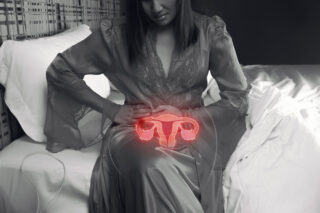
Oasis Advanced GYN Surgery
7501 Greenway Center Drive
Suite #410
Greenbelt, MD
240-616-3934
3202 Tower Oaks Blvd.
Suite #200
Rockville, MD
240-616-3934

More Women's Health & Beauty Articles
Understanding Fibroids, Abnormal Bleeding, and Endometriosis

Key Issues In Women’s Health
Women’s reproductive health is a complex field, with conditions like fibroids, abnormal bleeding, and endometriosis affecting many women globally. Understanding these conditions is crucial for early diagnosis, effective management, and maintaining overall well-being.
Fibroids
Fibroids, also known as uterine leiomyomas or myomas, are non-cancerous growths that develop in or on the uterus. They vary in size and number, and while some women may be asymptomatic, others experience significant symptoms. Common symptoms include heavy menstrual bleeding, prolonged periods, pelvic pain, frequent urination, and complications during pregnancy.
The exact cause of fibroids is unknown, but factors such as genetics, hormones (particularly estrogen and progesterone), and lifestyle can influence their development. Treatment options range from watchful waiting for smaller, asymptomatic fibroids to medications that regulate hormones and reduce symptoms. In severe cases, surgical interventions like myomectomy or hysterectomy may be necessary.
Abnormal Bleeding
Abnormal uterine bleeding (AUB) refers to any deviation from normal menstrual patterns, including heavy menstrual bleeding (menorrhagia), bleeding between periods, or prolonged menstruation. AUB can be caused by various factors, including hormonal imbalances, fibroids, polyps, and underlying medical conditions like thyroid disorders or clotting issues.
Diagnosing AUB often involves a comprehensive evaluation, including medical history, physical examination, blood tests, and imaging studies like ultrasound. Treatment depends on the underlying cause and may include hormonal therapies, nonsteroidal anti-inflammatory drugs (NSAIDs), or surgical procedures such as dilation and curettage (D&C) or endometrial ablation.
Endometriosis
Endometriosis is a chronic condition where tissue similar to the lining inside the uterus (endometrium) grows outside the uterus, commonly on the ovaries, fallopian tubes, and pelvic lining. This misplaced tissue responds to menstrual cycle hormones, causing inflammation, pain, and the formation of scar tissue (adhesions).
Symptoms of endometriosis include severe menstrual cramps, chronic pelvic pain, pain during intercourse, and infertility. The exact cause of endometriosis is unclear, but factors like retrograde menstruation, genetics, and immune system issues are believed to contribute.
Diagnosis is often challenging and may require laparoscopy, a minimally invasive surgical procedure. Treatment options include pain management with NSAIDs, hormonal therapies to reduce or eliminate menstruation, and surgical removal of endometrial tissue. In severe cases, a hysterectomy may be considered.
Other Articles You May Find of Interest...
- Exploring the Benefits of Prenatal Vitamins When You’re Not Pregnant
- Is Fatigue During Ovulation Normal and What Can You Do About It?
- How to Recognize Imbalances in Ladies’ pH Balance for Optimal Health
- Dealing with Boils on the Vulva: Causes, Symptoms, and Treatment Options
- Revitalize Your Pelvic Health: Effective Tips to Tighten Your Vagina After Giving Birth
- Unlocking the Power of NAD: Benefits, Dosage, and Insights for Women’s Health
- Can PCOS Supplements Help You Achieve Your Weight Loss Goals?














